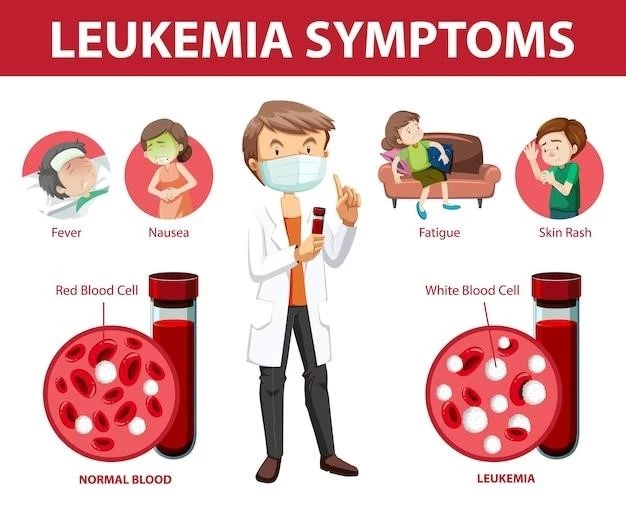Disease Overview of Hemangioma Thrombocytopenia Syndrome
Hemangioma thrombocytopenia syndrome is a rare pediatric vascular anomaly characterized by skin hemangiomas, low platelet count, and other blood abnormalities. This article provides insights into the clinical manifestations, diagnosis, genetic background, treatment, complications, and prognosis of this syndrome.
Introduction to Hemangioma Thrombocytopenia Syndrome
Hemangioma thrombocytopenia syndrome, also known as Kasabach-Merritt Syndrome, is a rare pediatric disorder characterized by a combination of vascular anomalies like skin hemangiomas and thrombocytopenia. Skin hemangiomas are benign tumors originating from blood vessels, while thrombocytopenia refers to a low platelet count in the blood.
This syndrome poses significant challenges in diagnosis and treatment due to the complex interplay between vascular anomalies and blood abnormalities. The exact cause of Hemangioma thrombocytopenia syndrome remains unclear, although there is evidence to suggest genetic factors may play a role in its development.
Clinically, patients with this syndrome may present with rapidly growing hemangiomas, easy bruising, and petechiae. The presence of low platelet levels can lead to spontaneous bleeding and complications. Early identification and intervention are crucial to prevent severe hemorrhagic events and manage the associated symptoms effectively.
Understanding the underlying genetic and molecular mechanisms of Hemangioma thrombocytopenia syndrome is essential for developing targeted treatment approaches. The intricate relationship between vascular anomalies and platelet abnormalities necessitates a multidisciplinary approach involving dermatologists, hematologists, and geneticists for comprehensive patient care.
Through advancements in diagnostic techniques and therapeutic strategies, healthcare professionals can improve the management of Hemangioma thrombocytopenia syndrome, enhance patient outcomes, and mitigate potential complications associated with this rare genetic disorder.
Understanding the Clinical Manifestations
The clinical manifestations of Hemangioma thrombocytopenia syndrome encompass a spectrum of symptoms related to both vascular anomalies and platelet abnormalities. Patients often exhibit skin hemangiomas, which are visible as red or purple lumps or patches on the skin’s surface.
These hemangiomas can vary in size and location, affecting different parts of the body, including the face, limbs, or trunk. In some cases, hemangiomas may be deep-seated, leading to potential complications such as ulceration or disfigurement.
Thrombocytopenia, characterized by a decreased platelet count in the blood, contributes to the clinical profile of the syndrome. Low platelet levels can manifest as easy bruising, prolonged bleeding from minor injuries, and petechiae – small red or purple spots that appear on the skin due to bleeding under the surface.
In severe cases, individuals with Hemangioma thrombocytopenia syndrome may experience spontaneous bleeding, including nosebleeds, gum bleeding, or internal bleeding. These bleeding episodes can be life-threatening and require immediate medical attention to prevent further complications.
Other clinical features of the syndrome may include anemia, fatigue, and weakness due to abnormal blood cell counts and circulation. The intricate nature of Hemangioma thrombocytopenia syndrome necessitates a comprehensive assessment of all clinical manifestations to tailor individualized treatment plans and address the diverse needs of affected patients.
Diagnosis and Genetic Background
Diagnosing Hemangioma thrombocytopenia syndrome involves a comprehensive evaluation of clinical symptoms, laboratory tests, imaging studies, and genetic analysis. Medical professionals may conduct a physical examination to assess the extent and characteristics of skin hemangiomas and evaluate signs of thrombocytopenia.
Laboratory investigations, including blood tests to measure platelet levels and clotting function, are essential for confirming the diagnosis of thrombocytopenia. Imaging modalities such as ultrasound, MRI, or CT scans may be used to visualize internal hemangiomas and assess their impact on surrounding tissues.
Genetic studies play a crucial role in uncovering the underlying genetic mutations or anomalies that contribute to the development of Hemangioma thrombocytopenia syndrome. Genetic testing can identify specific gene variants associated with vascular abnormalities and platelet dysfunction, providing valuable insights into the disease’s pathogenesis.
Individuals with a family history of vascular malformations or inherited platelet disorders may undergo genetic counseling to understand the hereditary implications of the syndrome. By elucidating the genetic background of Hemangioma thrombocytopenia syndrome, healthcare providers can offer personalized management strategies and potential targeted treatments based on the individual’s genetic profile.
Collaboration between healthcare professionals specializing in dermatology, hematology, genetics, and other relevant fields is essential for an accurate diagnosis and tailored care plan for patients with Hemangioma thrombocytopenia syndrome. A multidisciplinary approach helps ensure comprehensive genetic evaluation, precise diagnosis, and effective management of this complex and rare genetic disorder.
Management and Treatment Approaches
The management of Hemangioma thrombocytopenia syndrome involves a multidisciplinary approach aimed at addressing both the vascular anomalies and blood abnormalities associated with the disorder. Treatment strategies may vary depending on the severity of symptoms, the extent of hemangiomas, and platelet counts.
For skin hemangiomas, interventions such as laser therapy, corticosteroids, or surgical excision may be considered to mitigate aesthetic concerns, prevent ulceration, or reduce the risk of bleeding. Dermatologists play a key role in overseeing the management of cutaneous manifestations and optimizing cosmetic outcomes.
To address thrombocytopenia and associated bleeding tendencies, hematologists may recommend platelet transfusions, medications to stimulate platelet production, or other hematological interventions. Close monitoring of platelet levels and clotting function is essential to prevent hemorrhagic complications.
Genetic counseling and testing can provide valuable information regarding the hereditary aspects of Hemangioma thrombocytopenia syndrome, guiding treatment decisions and offering insights into potential future risks for affected individuals and their families.
In severe cases where conservative treatments are ineffective, more aggressive interventions such as immunosuppressive therapy or experimental targeted therapies may be considered under the supervision of specialized healthcare providers. Close monitoring for treatment efficacy and adverse effects is critical in managing the complex nature of this syndrome.
Continued research into novel therapeutic approaches, including gene therapy and molecular targeted treatments, holds promise for improving outcomes and quality of life for individuals with Hemangioma thrombocytopenia syndrome. By combining conventional and innovative treatment modalities, healthcare professionals can optimize patient care and enhance long-term prognosis for those affected by this rare genetic disorder.
Potential Complications and Prognosis
Individuals with Hemangioma thrombocytopenia syndrome are at risk of experiencing various complications due to the vascular anomalies and blood abnormalities characteristic of the disorder. Potential complications include severe bleeding episodes, hemodynamic instability, anemia, and delayed wound healing.
Uncontrolled bleeding from hemangiomas or due to low platelet counts can lead to significant blood loss, requiring urgent medical intervention to stabilize the patient’s condition. Hemorrhagic complications may necessitate blood transfusions, intensive care monitoring, and surgical interventions to control bleeding and restore hemostasis.
Chronic anemia resulting from prolonged bleeding or blood cell abnormalities can contribute to fatigue, weakness, and impaired physiological functions. Timely management of anemia through appropriate treatment strategies is essential to prevent adverse outcomes and improve overall well-being.
The prognosis for individuals with Hemangioma thrombocytopenia syndrome varies depending on the extent of vascular involvement, the severity of thrombocytopenia, and the responsiveness to treatment. Early diagnosis, comprehensive management, and close monitoring of symptoms are crucial in influencing long-term outcomes and prognosis.
With advances in medical research and personalized treatment approaches, the prognosis for individuals with Hemangioma thrombocytopenia syndrome has improved in recent years. Collaborative efforts between healthcare providers, researchers, and patients play a vital role in enhancing therapeutic outcomes and quality of life for those affected by this complex and rare genetic disorder.
In conclusion, Hemangioma thrombocytopenia syndrome poses a unique challenge in the medical field due to its combination of vascular anomalies and blood abnormalities. This rare pediatric disorder requires a multidisciplinary approach involving dermatologists, hematologists, geneticists, and other specialists to provide comprehensive care and tailored treatment strategies.
Understanding the clinical manifestations, genetic background, and potential complications of Hemangioma thrombocytopenia syndrome is essential for accurate diagnosis and effective management. By utilizing a combination of diagnostic tools, including genetic testing and imaging studies, healthcare providers can develop personalized treatment plans that address the specific needs of each patient.
Management of this syndrome involves a holistic approach that targets both the skin hemangiomas and thrombocytopenia to minimize bleeding risks, improve quality of life, and enhance long-term outcomes. Ongoing research into innovative treatment modalities and genetic therapies offers hope for continued advancements in the field of rare genetic disorders like Hemangioma thrombocytopenia syndrome.

Through collaborative efforts, personalized care, and a commitment to advancing medical knowledge, healthcare professionals can make significant strides in improving the prognosis and quality of life for individuals affected by Hemangioma thrombocytopenia syndrome. By raising awareness, promoting early detection, and implementing comprehensive management strategies, the medical community can continue to support individuals and families impacted by this complex and challenging genetic disorder.
